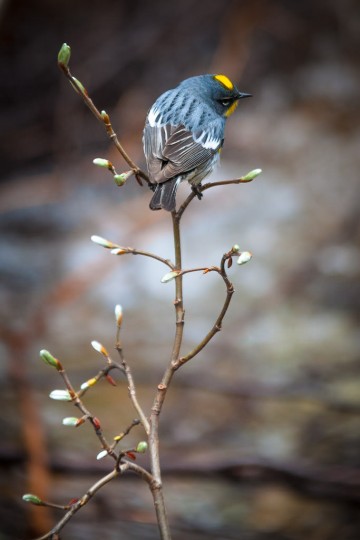 Yellow-rumped Warbler on budding willow I’ve always liked this photograph, and the memory of the day that I took it (which often confounds a photographer’s ability to tell if a photo’s any good or not). I’ve even written a post about this image before (which you can read here). Even so, I’ve never printed it, so I figured this Daily Print project was just the excuse I needed.
Bonus questions for this post: +1 point if you can tell me the sex of the bird, +5 points for the subspecies, and +50 points if you can tell me the age (hint: click the image to view it full size, and remember that this photo was taken in May…)
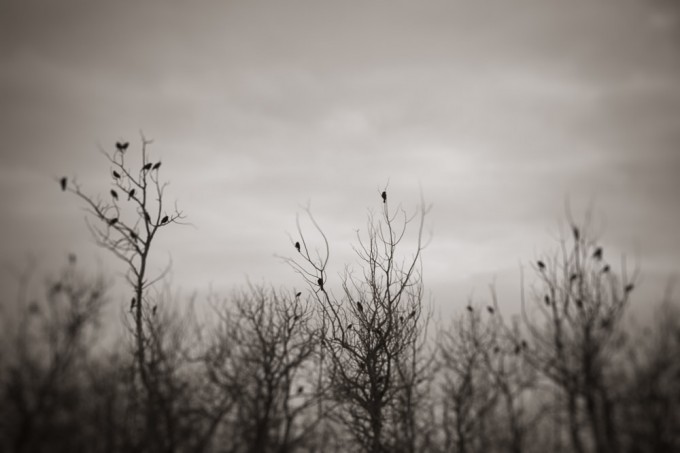 Blackbird flock in bare trees I recently received a request from a woman to use this photograph in a blog post she’s writing, which gave me the great excuse to re-visit this image and to share it here (it hasn’t made it into the new website yet, but watch for it in the Birds section of my catalogue, hopefully in the next few months).
I took this photo near the Beaverhill Bird Observatory near Tofield, AB in the spring of 2007. At the time, I was experimenting with defocusing images, or portions thereof, for creative effect. In this case, the original image was mostly sharp, and I “painted in” the blurred effect in post-processing. I was inspired to try this technique by another photographer who would create the same effect in the darkroom by spilling chemicals over the drying print and using a brush or sponge to blur the image.
It’s always fun to try new techniques, and although I haven’t taken many defocused photographs lately, you can view a selection of these images in my “Boreal Impressions” portfolio. I’d also recommend having a look at William Neill’s “Impressions of Light” portfolio for more great blurry images that were an inspiration to me (although he achieves the effect mostly through long shutter speeds and camera movement, rather than manually defocusing the lens).
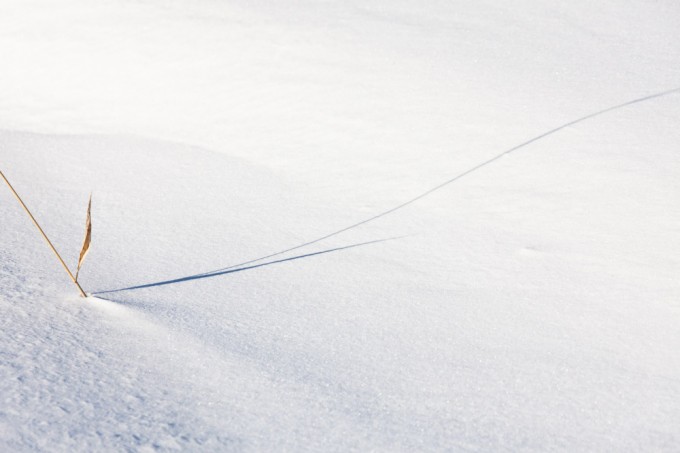 Dried grass calligraphy on fresh snow Yesterday was a beautiful, sunny winter day in Edmonton (although a bit too warm—things shouldn’t be melting yet!) and I took the chance to take the snowshoes (and kid, and dog, and camera) out to the Cooking Lake-Blackfoot Provincial Recreation Area. I like going into the park from the south end, parking at the Islet Lake staging area.
With all the snow we’ve gotten, the lakeshore topography has been smoothed out to gentle undulations of perfect, smooth snow. That, combined with the low sun this time of year, provides lots of chances for photographs with simple, elegant lines and minimal visual clutter.
 Cooking lake post-top snow cones (And then there’s this one—pretty much on the other end of the spectrum—using the same basic elements for slapstick rather than elegance… but can you guess which one my daughter preferred?)
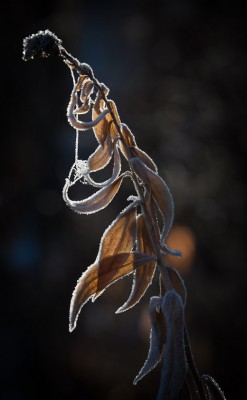 Dried Goldenrod leaves with hoar frost Although this photograph was from a little earlier in the season than my last post, it was a similarly frosty, beautiful day. It’s amazing how a lining of frost can add definition and visual interest to an otherwise subdued scene. This is especially true when photographing with the sun behind your subject, the backlighting making the frost shine while the rest of the subject remains shadowed. I also added a fairly heavy vignetting effect while processing this image, to further draw attention to the lines created by the curled, dried goldenrod leaves.
 Autumn foliage triptych Here are three photographs of autumn colour in the plants out at Ministik Lake. While processing these images, I played around with de-saturating all the colours except for those of the main subject. This kind of manipulation of the image is outside of the regular “darkroom-style” processing that I usually restrict myself to—but in this case, I really like how it looks. I also added a fairly heavy vignetting effect (the darkening of the corners) to further accentuate the main subject of each image.
With their similarities in colour, subject matter, and processing technique, I found that these three photographs complemented each other when viewed side-by-side. I don’t know the “theory” behind why some images work together as a group, but I do know that sometimes a triptych is definitely greater than the sum of its parts. (Click here to see a couple more of my favourite triptychs). As always, I’d love to hear your thoughts—just leave a comment below.




Click these thumbnails to see a larger vesion of each image individually (use your arrow keys to move between them).
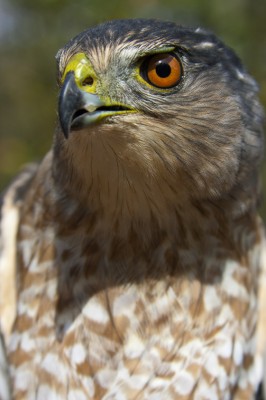 Cooper’s Hawk Today, after a couple days of bad weather, I went for a walk at the Strathcona Science Park, a provincial park on the eastern edge of Edmonton (follow 17th street north from baseline road (101 ave)). The early autumn colours were starting to come out, but most striking was the number of raptors moving through the river valley. During my relatively short walk, I saw a pair of Swainson’s Hawks, several Red-tailed Hawks, a Bald Eagle perched in a snag, and a Cooper’s Hawk hunting Yellow-rumped Warblers in the shrubs along the river bank.
I didn’t get any photographs of the birds I saw today, so I thought I’d share this one—a Cooper’s Hawk that I caught while working as a bird bander at the Beaverhill Bird Observatory in Tofield. As you may judge from the photo, he was none too happy about the situation, but I really enjoyed getting a close-up look at one of these terrific birds.
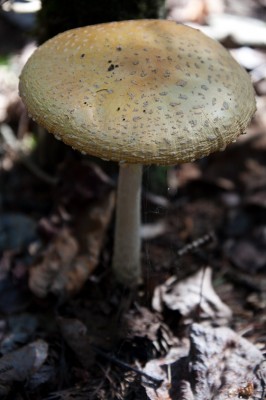 Amanita mushroom from above 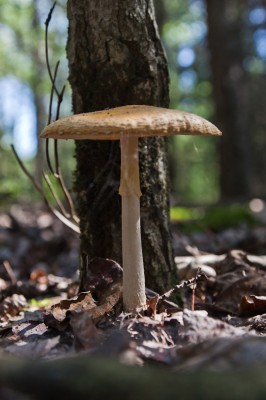 Amanita mushroom 
In my last post, I didn’t say much about the photographs themselves, as they were more documentary than artistic in nature, but perhaps one thing I’ll mention, as something for you to try out if you haven’t already, is that for the first time I used the “Live View” function on my DSLR to get down really low beside these mushrooms for an interesting perspective (e.g. the puffball, and the amanita).
Live View (i.e. framing the photo using the LCD on the back of the camera) has been common on point-and-shoot cameras for a long time, but is just being introduced on SLR cameras in the past few years. However, I still find myself using the optical viewfinder for everything except shooting video—just old fashioned I guess (although in my defence, I think the form factor of a DSLR does not lend itself to being held at arms’ length, especially with a longer lens attached). In this case though, by using the Live View, I could basically have the camera and lens on the ground, and still compose a decent image even though I was also carrying my daughter in a big backpack. You can see the difference in two photos above, the one on the left I made looking through the viewfinder while crouching as low as possible, and the one on the right is taken in the same posture, but using the LCD on the back of the camera to compose the image.
Using Live View (or whatever your camera’s maker calls it) for this type of otherwise awkward shot is definitely a trick that I will keep in mind for the future, and recommend to others for those moments where the unusual angle is tempting, but laying prostrate just isn’t.
|
(Click photos to enlarge)
|













